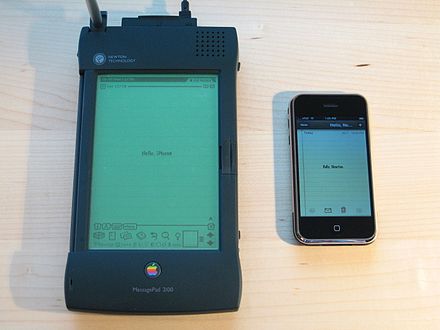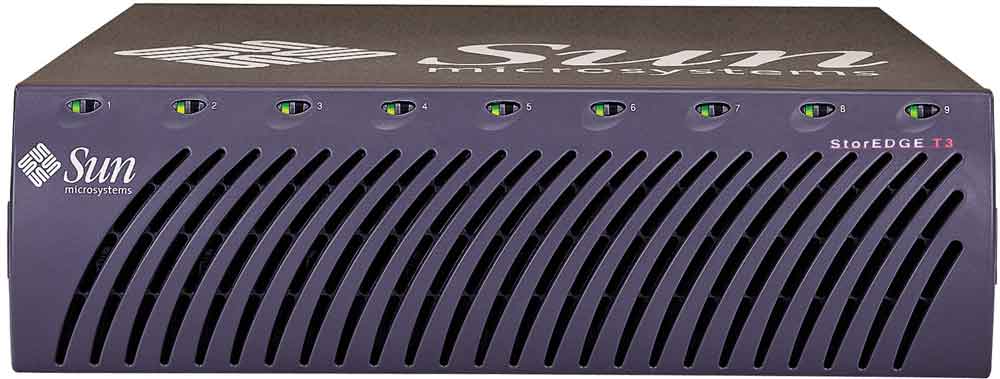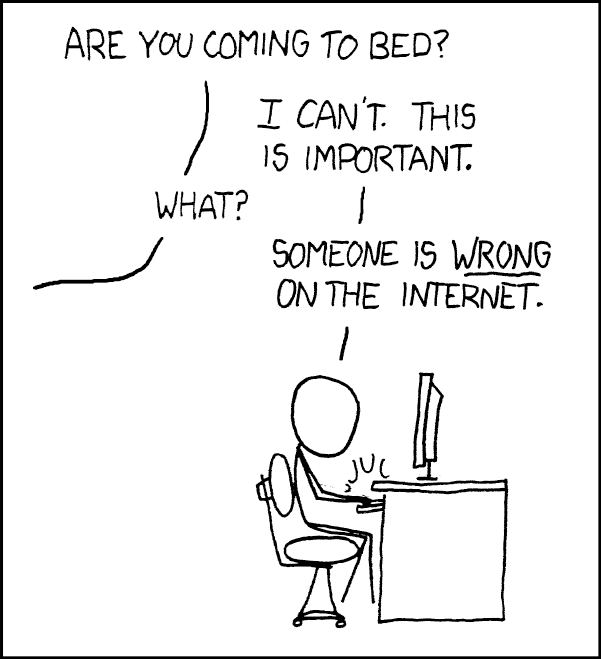Someone recently suggested I document how I have made an impact in my technology career, and I realized I have some fun stories -- although some weren't fun at the time.
At my first full-time job the official email client was the MH Message Handling System running on institutional UNIX systems. I introduced Eudora, which was much more attractive and ran on Macs and PCs. Eudora quickly took over and was instrumental in making email popular across the institution.
Later I was the solo system administrator at a Mac-based web/Internet site. We sent out weekly email blasts using Eudora Internet Mail Server (EIMS). Glenn, the developer, thought we were the largest EIMS site in existence. Nine months after I resigned from that job, I went back to visit friends, who mentioned the company had replaced me with seven people.

I had several Newton MessagePads, and used a PCMCIA card that let me send and receive email via the 2-way pager network. Internet email accounts were not ubiquitous; this was before WiFi and cellular modems. Apple hosted a SI/VAR (Systems Integrator / Value Added Reseller) event at its Cupertino campus, and I was invited. I still have the VHS tapes they gave us afterwards -- with a lot of patience, you could probably find me in an audience pan.
Long ago I ran my own Windows NT 3.51 server for three main applications: O'Reilly WebSite Pro (webserver), LSMTP (SMTP/POP server), and LISTSERV (mailing lists). I set up over a hundred distinct web sites and another hundred mailing lists on this server. When it was time for upgrades I bought Pentium II server (the older server was a Pentium Pro), installed Windows NT 4, and installed newer versions of WebSite Pro/LSMTP/LISTSERV. I warned our users of the migration, but only one noticed. This was unquestionably one of my greatest professional accomplishments, and I don't even like Windows.
At the same organization, I used QuickDNS to provide DNS services for our many subdomains. The corporate email systems was Windows cc:Mail. I noticed that cc:Mail did not deliver reliably or quickly, and technical support told me that the cc:Mail Gateway was inherently unstable, which was obvious from the word 'Gateway' in the product name (I still don't get that one). Our solution was to route all inbound and outbound corporate SMTP email through my LSMTP server, which (designed to handle mailing list delivery to hundreds of thousands of users) was much more reliable. Using LSMTP as a proxy for the unstable cc:Mail Gateway made corporate email much more reliable -- cc:Mail only had to communicate with a single LSMTP server on the local network. LSMTP, in turn, was perfectly capable of dealing with SMTP servers across the Internet and buffering messages until cc:Mail was ready to receive them. They also had trouble with the outsourced corporate DNS service, so we migrated corporate DNS to QuickDNS. After a few intense years of working with the IT department, the Director announced his resignation. He suggested I apply for his position, but it didn't seem like a good idea.
As Apple was transitioning from Classic Mac OS to Mac OS X, Mac authors needed to get up to speed on the new technology. A couple of them were writing books about Apple's new operating system, but weren't ready to write about the new UNIX command line (Terminal) environment. They asked a well-known Mac author I had worked with for advice, he referred them to me, and I wrote a chapter for each book.

Years ago I designed and installed a Sun Microsystems system which included 4 StorEDGE T3 server arrays. It occupied an entire rack, and a colleague named it mrstweedy. A couple years later I replaced it with a single 2U IBM xSeries server -- faster, with more storage. The new Linux server, including 5 years support, cost less than one year of support for mrstweedy.
I submitted a bunch of bug reports a software developer, we became friends, and when he needed a new manual for the next version of their product he hired me to write it. Another friend asked for help documenting a brand-new application, but I explained that there was no way we could make it economical. Either he'd underpay me for the hours (compared to my day job), or it would be more than he could reasonably pay. We remained friends, and a few years later he did pay me and I wrote the manual.

Typographical and other errors tend to grab my attention. I pointed out enough to friends and others to get several jobs and make a few friends. At a few dotcom jobs, I bashed my head against the Apache Tomcat documentation. When installing Tomcat, I found three official documents with different procedures for installation -- none of which was actually correct. Over time I submitted enough corrections that someone added me to the documentation as an author. Several times during that period, I told someone my name in a bar, they recognized my name, and they thanked me for my Tomcat contributions -- not realizing I had nothing to do with the programming.
I am detail oriented. I filed over 1,500 bug reports with one vendor, and several hundred with another.

My favorite cartoon is Duty Calls by xkcd. One of my favorite authors misunderstood an email I sent which referenced that cartoon, and thought I was xkcd!